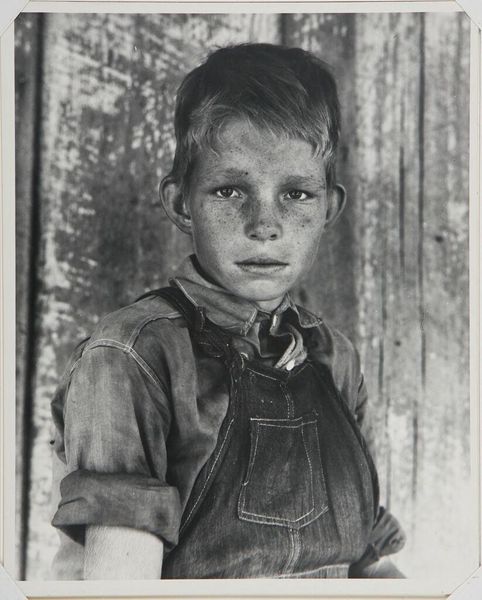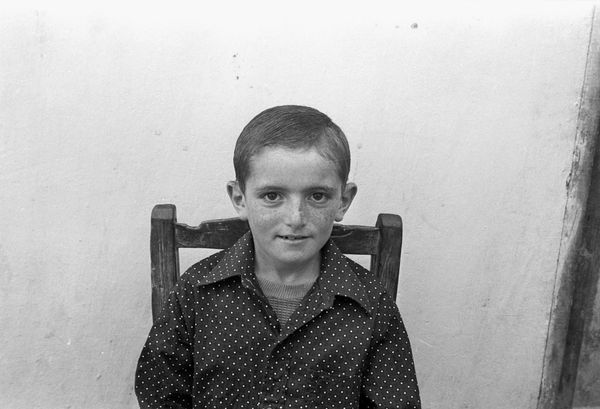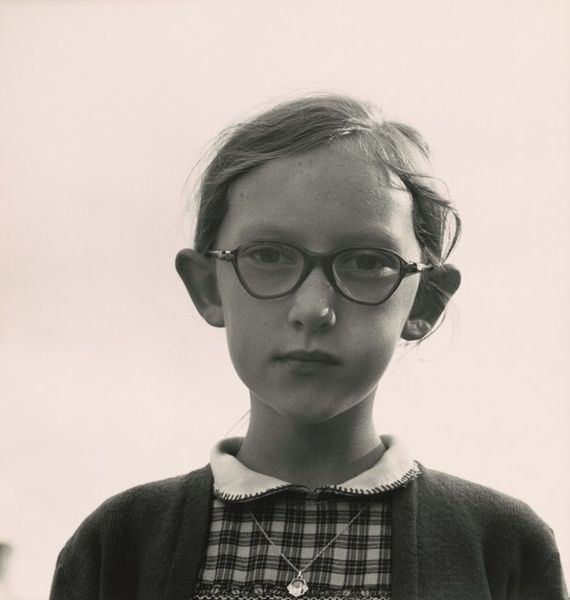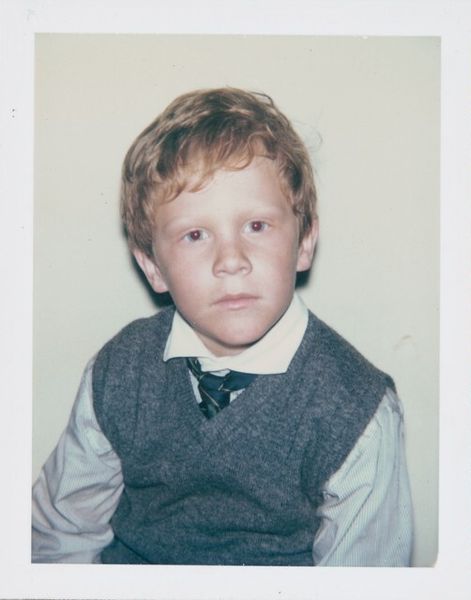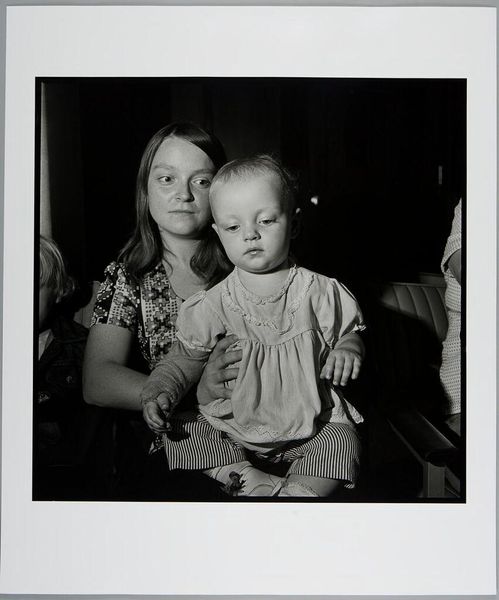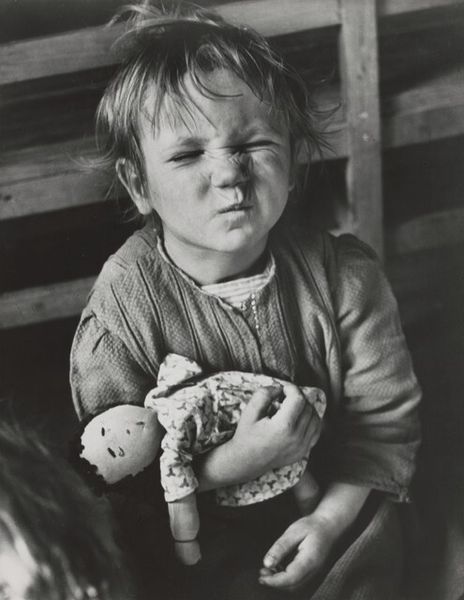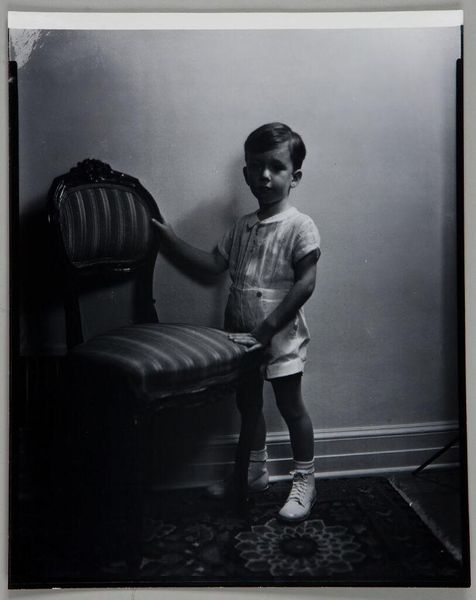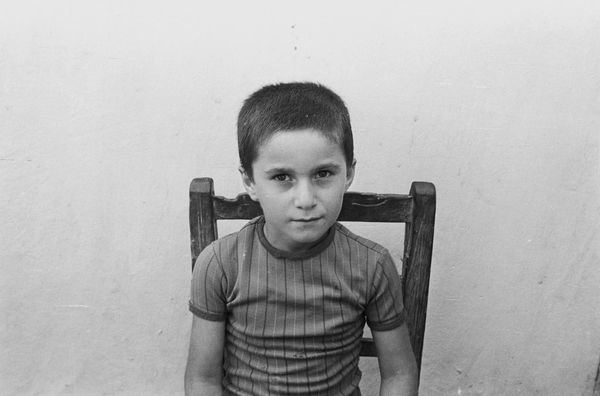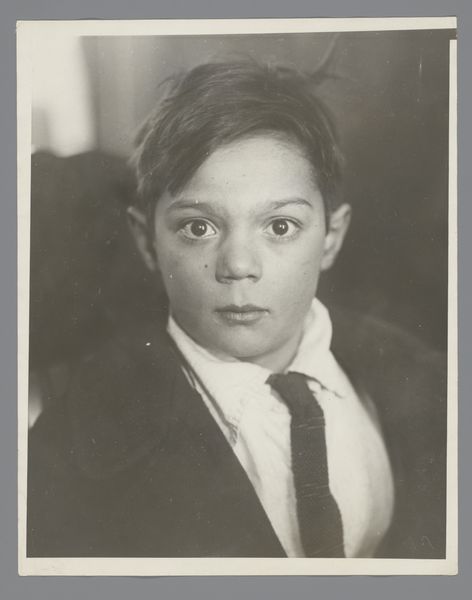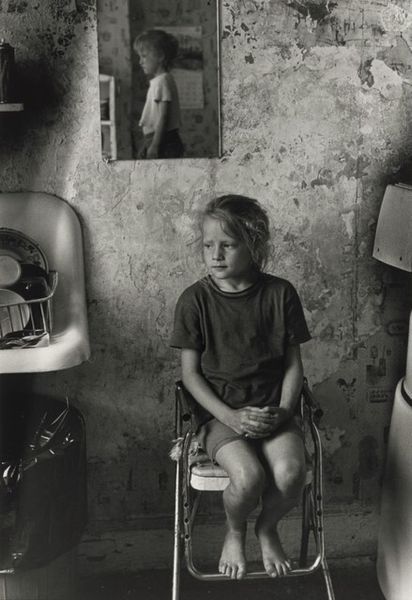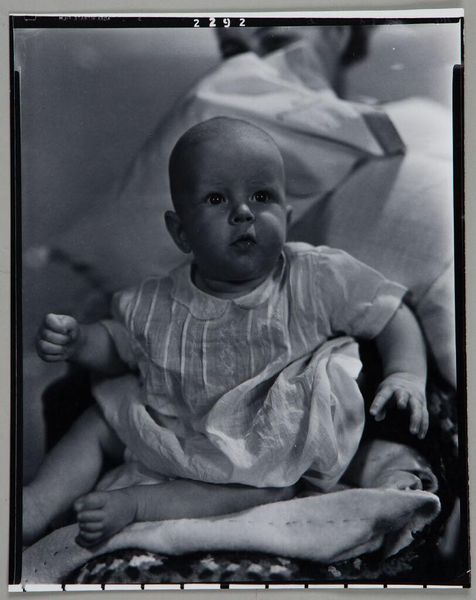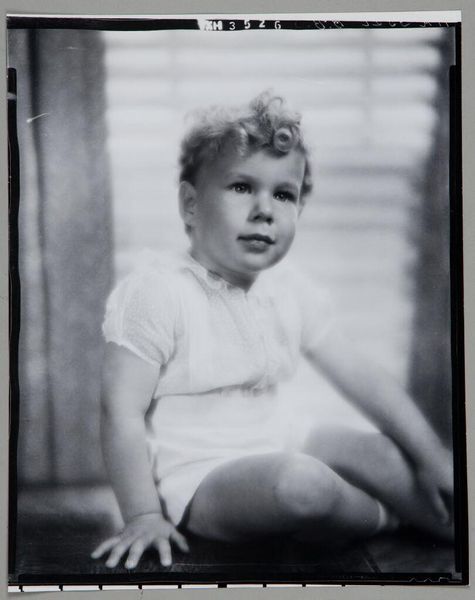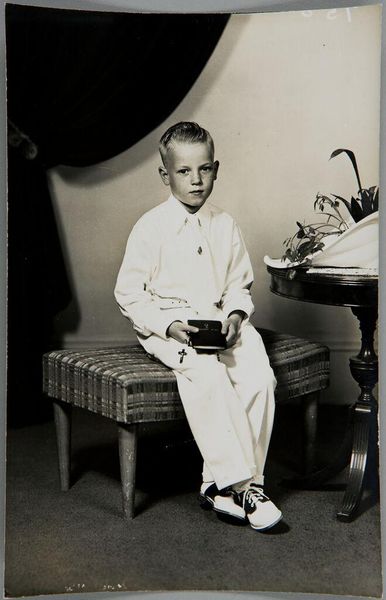
photography, gelatin-silver-print
#
portrait
#
black and white photography
#
social-realism
#
photography
#
black and white
#
gelatin-silver-print
#
monochrome photography
#
ashcan-school
#
realism
Dimensions: image: 11.7 x 10.9 cm (4 5/8 x 4 5/16 in.) mount: 17.9 x 14 cm (7 1/16 x 5 1/2 in.)
Copyright: National Gallery of Art: CC0 1.0
Editor: We're looking at a gelatin-silver print titled "Untitled (Appalachia series)" by Milton Rogovin, taken sometime between 1962 and 1971. The starkness of the black and white photography is so direct. What underlying message do you perceive in this portrait? Curator: The directness, I think, is precisely Rogovin's point. Consider the period: the 60s and 70s, a time of great social upheaval. Rogovin, working in Appalachia, deliberately chose a realist style—he eschewed romanticization. He isn’t offering us an idyllic portrait of rural life. Instead, what historical and social forces do you think are at play, informing what we see here? Editor: I see a boy, looking directly at the camera, wearing worn clothes. It's clear he’s not part of some privileged class, which speaks volumes about socio-economic disparities. Curator: Exactly. And that is the root of Rogovin’s project. He wanted to make visible the marginalized, to give voice to those often ignored. Appalachia was, and in some ways remains, a site of systemic poverty. He's prompting us to confront uncomfortable truths about class, labour, and the human cost of industrial neglect. Do you feel this image achieves that goal? Editor: Definitely. The gaze of the boy seems to be challenging the viewer. He’s present and undeniable. Knowing the context deepens the impact. Curator: Absolutely. Rogovin’s work is a powerful example of how art can serve as a form of social activism, demanding recognition and, ultimately, justice. I hope this gives us some insight into Appalachia's historical narrative and encourages dialogue for future analysis. Editor: I see that now, and I am thankful that I better understand Rogovin's Appalachia series and appreciate your insights into art as activism.
Comments
No comments
Be the first to comment and join the conversation on the ultimate creative platform.
